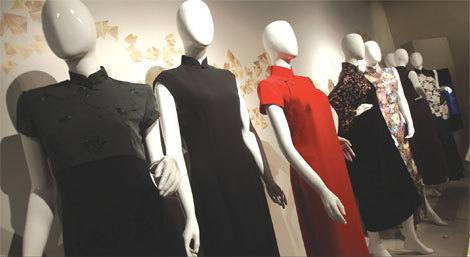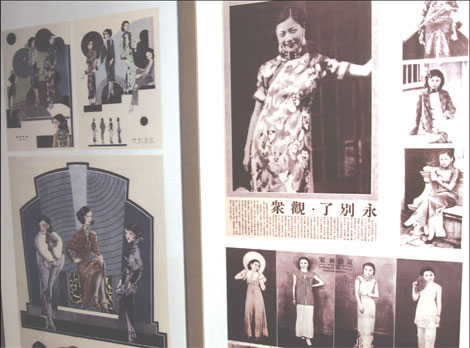It's rare that a fashion endures for nearly 400 years. But the qipao, in the four centuries since it came down from Manchuria, has changed with the times, so that today it remains an iconic symbol of Chinese elegance and femininity.
|

Qipao designs from Blanc de Chine are shown at a recent exhibition, called "The Evergreen Classic - Transformation of the Qipao". The pieces from the luxury fashion brand have incorporated contemporary fashion elements with the traditional Chinese garment.
|
In the long ago dream of Kin Yeung, he saw himself introducing Chinese culture to the world: its art, history, philosophy, and all the cultural values of Zen Buddhism, Taoism and Confucianism. And in his dream he would accomplish this through contemporary fashion.
That's how the luxury fashion brand Blanc de Chine started, back in 1986.
One finds Yeung in his shop in the Landmark, in Central. A modest man of sixty-something - in a black shirt and single pleated black trousers - his own design, he flips through the garment rack, selecting a qipao, then holds it aloft for examination.
"Dignity, inner beauty, never emphasizes exposing the body," Yeung said. "Old fashion pauses at a point in the timeline and never moves on," he mused.
"Modern fashion takes reference from a point in the past and transforms it into today's lifestyle, just like our Chinese culture. People think Chinese teachings and culture are old-fashioned. They are people who don't have confidence in the culture. They never apply the traditions to make them relevant for today."
He looks around at his designs hanging in the shop, "so ancient, yet so modern". He agrees fashion anywhere must derive from its culture.
He takes his own inspirations from the classical qipao and from traditional Chinese teachings. Then he modernizes them and creates gowns for the present.
The modern qipao, emerged from Shanghai, in the early part of the 20th century. It was adapted from a traditional garment that came to China during the early Qing Dynasty (1644-1911).
The qipao is tightly fitted with a mandarin collar with slits on either side along the hem.
Incorporating contemporary fashion elements with the traditional garment, Yeung revises the garment with sparkling patterns and popular designs. One of the designs from his "Travel" series is a qipao made from double-sided jersey. It's light weight and has a soft texture. The dress can be worn in the traditional way, as a long dress. It can also be worn as a short dress, a skirt and even a T-shirt. Yeung calls it "Interactive Dress." He's designed it for the convenience of contemporary Hong Kong people.
|

Historical qipao photos are also displayed at the exhibition.
|
Some other examples are the see-through qipao, made with netted shell fabric and closed with knot-shaped buttons to embody the quintessential qualities of the modern woman. Another piece is covered with red sequins, rhinestones at the collar and side slits. It was worn by the late Anita Mui when the singer performed a 2003 concert.
A recent exhibition, called "The Evergreen Classic - Transformation of the Qipao", featured a dozen designs from Blanc de Chine.
One of Yeung's pieces shown at the exhibition was a black qipao. It was the simplest and most classic design and a favorite of the company's chief operating officer, Davie Mok.
"The simpler the piece looks, the more difficult for the tailor to make the qipao," Mok said. "It all depends on the handwork, the design, and even the material used that make the qipao a great piece to wear."
Mok thinks a real qipao should describe the inner beauty of Chinese women. That inner beauty, says Mok, encompasses their implicitness, subtleness, and intelligence inside and outside, without emphasizing exposed skin. This is among the principles that should apply to the design of every good qipao.